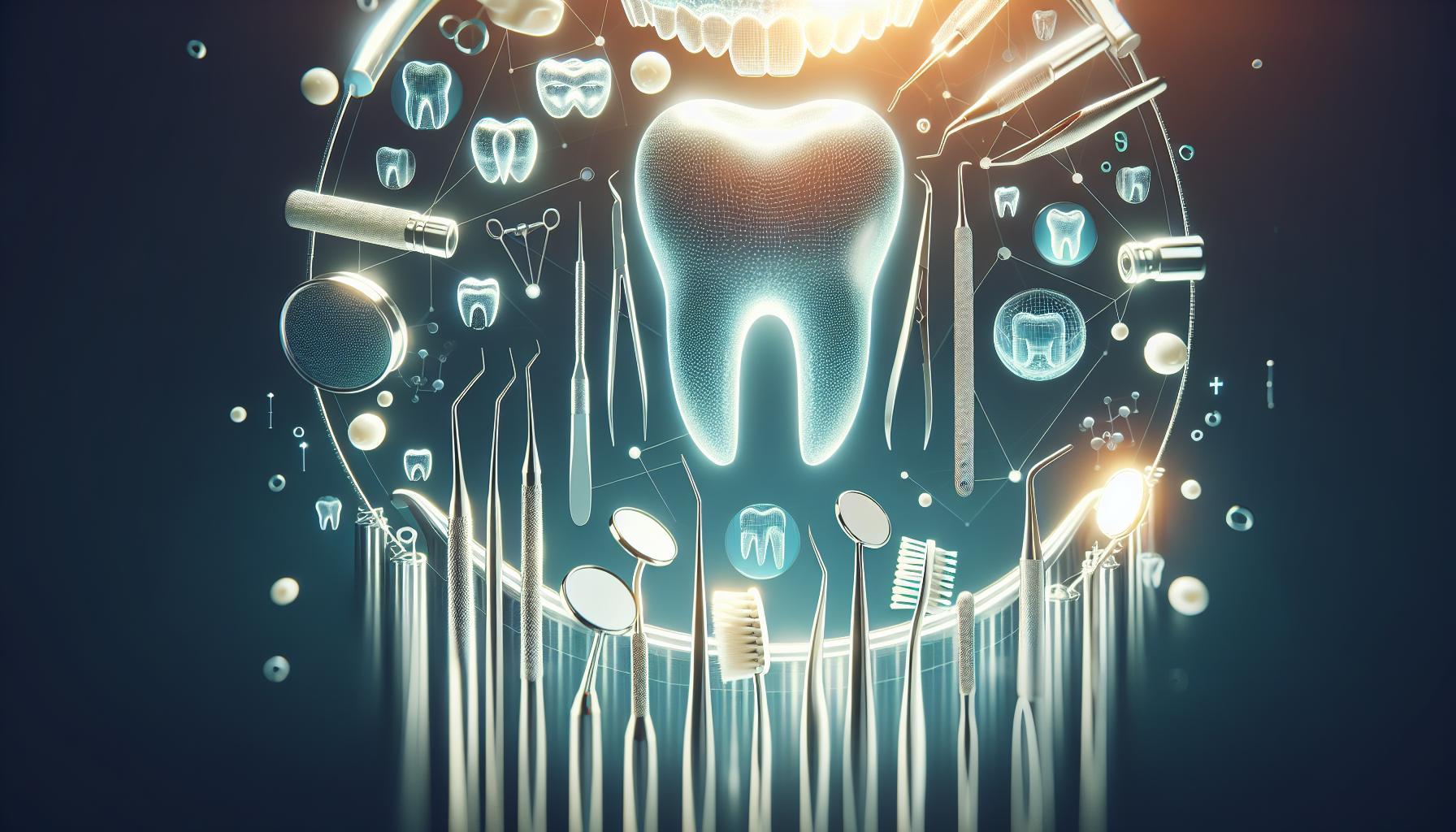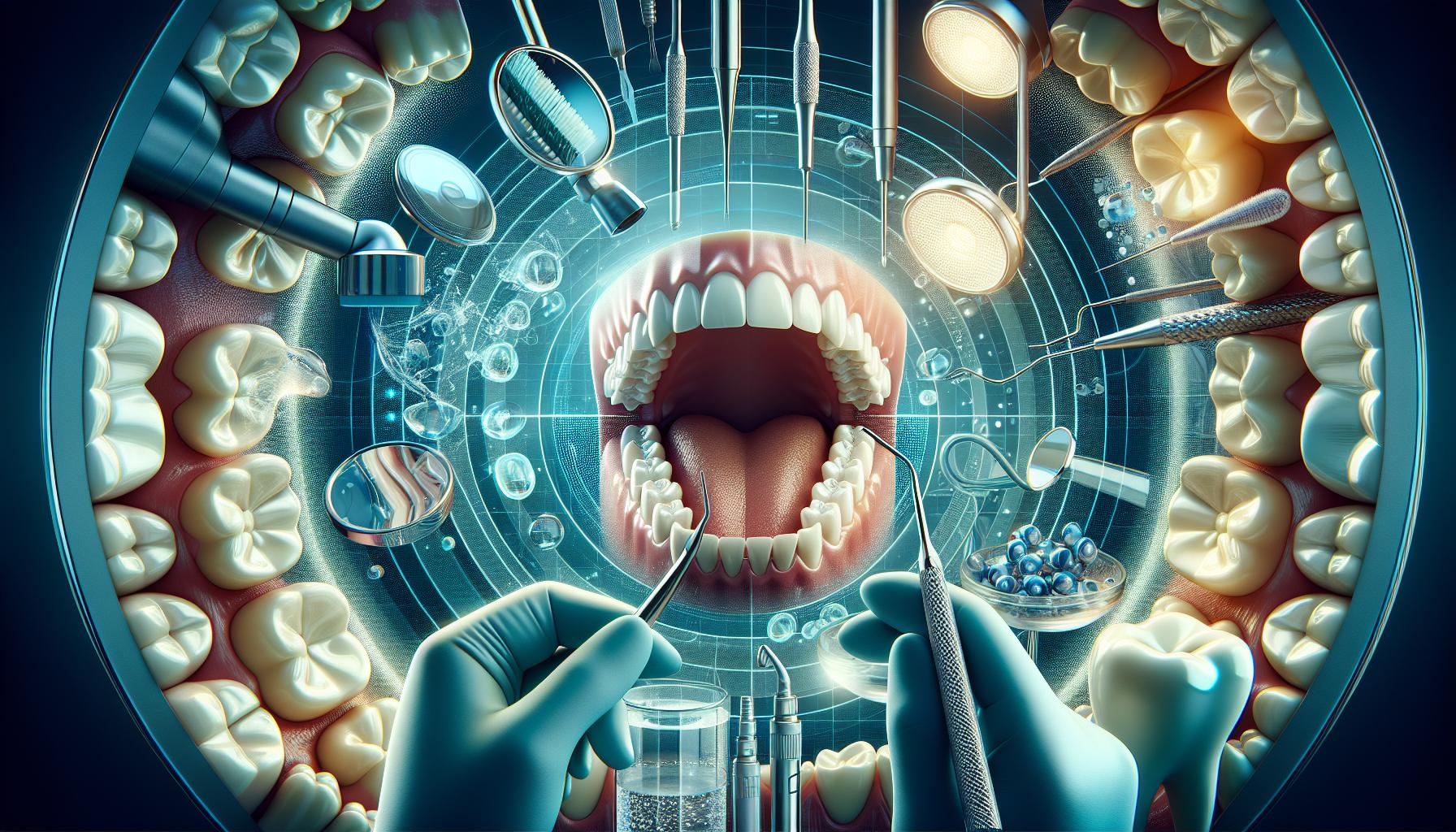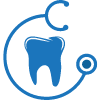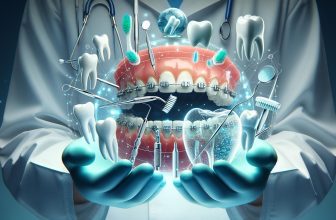
Food getting lodged in the grooves of your molars can be more than just a minor inconvenience; it can lead to discomfort and potential dental issues if not addressed promptly. Understanding how to effectively remove debris and maintain good oral hygiene is essential for preserving your smile and preventing long-term problems. Discover practical solutions to keep your teeth healthy and free from stubborn food particles.
Understanding Why Food Gets Stuck in Molar Grooves
Understanding the reasons behind food becoming lodged in molar grooves can illuminate not just our eating habits but also our dental care routines. The molars, with their uneven surfaces and deep grooves, are designed to grind and chew food efficiently. However, their intricate topography also serves as the perfect trap for food particles. Common culprits like popcorn kernels, pieces of meat, and fibrous vegetables can easily become stuck, leading to discomfort and potential oral health issues if not properly addressed. Moreover, factors such as plaque buildup, cavities, or inadequate dental hygiene can exacerbate the problem, making it even more challenging to dislodge food remnants from these tricky areas.
Regular oral hygiene is essential to prevent food from becoming stuck in these grooves. Basic practices include brushing twice a day and flossing regularly, but sometimes even these efforts aren’t enough. To enhance your routine, consider employing tools like interdental brushes or dental picks, which may more effectively dislodge stubborn bits of food. Another vital step is to maintain regular dental check-ups; your dentist can assess your molar health and identify any cavities or plaque accumulation that could be contributing to the problem. By staying proactive and informed about why food can get stuck in molar grooves,you can take necesary actions to minimize discomfort and protect your dental health. For further guidance on maintaining optimal oral hygiene and preventing food trapping, check our related articles on effective flossing techniques and professional dental cleaning.
Recognizing the Signs: Symptoms of Food Trapped in Your Teeth
When you sink your teeth into a appetizing meal, the last thing on your mind is the potential of getting food trapped in your molar groove. Though, this common occurrence can lead to discomfort and frustration if not addressed promptly. Recognizing the signs of food caught in your teeth is crucial for maintaining your oral health and ensuring that your meal experience remains enjoyable. Symptoms can range from mild irritation to acute discomfort, and being aware of these signs may help you take action before they escalate.
the most noticeable indication of food stuck in the molar groove is a persistent feeling of something “off” in your mouth, often described as soreness or pressure. You may also experience an increase in sensitivity around the affected teeth or a compounding issue, like bad breath, which is a telltale sign of trapped food decomposing. To help you identify this condition more effectively, consider these symptoms:
- Persistent discomfort: Feelings of irritation that don’t subside.
- Noticeable odor: An increase in bad breath can indicate trapped food particles.
- Swelling or redness: Gums around the molar may appear inflamed.
- Difficulty chewing: Pain or discomfort might make it hard to chew food normally.
If you notice any of these symptoms, it’s essential to take action.Regular brushing and flossing can help prevent food from becoming lodged in between teeth, but if you find that you’re frequently dealing with food trapped in your molar groove, it might be worth scheduling a visit to your dentist. They can offer personalized advice or treatment options, such as dental cleaning or check-ups, to ensure that your oral hygiene remains optimal. To learn more about how to manage and prevent food-related dental issues, explore related articles on our website.
Quick Fixes: How to Remove Food from Molar Grooves at Home
When it comes to pesky food particles stuck in molar grooves, you’re certainly not alone.This common annoyance often occurs after enjoying sticky or crunchy snacks, leaving you feeling self-conscious about your dental hygiene. Fortunately, there are several straightforward techniques you can use at home to dislodge those obstinate morsels and maintain oral cleanliness.
To effectively remove food from your molars, start with the tried-and-true method of dental floss. Flossing not only helps remove food but also combats plaque buildup. If dental floss isn’t accessible, you might want to consider using an interdental brush, which can maneuver easily around the grooves to clear debris. Rinsing your mouth with warm water while swishing vigorously can also help dislodge food. For especially stubborn pieces, a toothpick can be useful; though, exercise caution to avoid damaging your gums.Here’s a handy checklist of methods you can try:
- Dental Floss: Use it to glide between teeth and remove food particles.
- Interdental Brush: Ideal for removing debris from hard-to-reach areas.
- Warm Water Rinse: Swish around for a non-invasive cleaning.
- Toothpick: Gently dislodge food but be careful not to injure your gums.
Additionally,understanding the foods that tend to get stuck in these grooves can help you make better dietary choices. Sticky candies, nuts, and some fibrous fruits are notorious for this issue. Incorporating more water-rich foods like cucumbers or drinking plenty of water can facilitate easier oral cleaning and reduce the chances of food becoming trapped in the first place. For more in-depth tips, check out our guide on ”Removing Food Stuck Between Your Teeth.” Wherever you’re finding yourself in a battle against food stuck in molar grooves, these quick fixes can restore your smile with minimal fuss!
Effective Mouth Rinses and Flossing Techniques to Try
Did you know that proper oral hygiene can substantially reduce the odds of food becoming trapped in the grooves of your molars? This common issue can lead to discomfort, bad breath, and dental problems if not addressed promptly. Incorporating effective mouth rinses along with efficient flossing techniques can help keep your mouth clean and healthy. A good mouth rinse can dislodge food particles,providing immediate relief,while daily flossing plays a crucial role in preventing the buildup of debris and plaque that can lead to dental issues over time.
Effective Mouth Rinses
Selecting the right mouth rinse can enhance your oral hygiene routine. Here are some effective types of mouth rinses to consider:
- Antiseptic Rinses: Help kill bacteria and reduce plaque buildup.
- Fluoride Rinses: Provide additional protection against cavities and strengthen tooth enamel.
- Saline Rinses: A simple solution that can soothe gums and wash away food particles.
To ensure your rinse is effective, use it after brushing and flossing. This routine helps remove any remaining debris and leaves your mouth feeling fresh and clean. For those experiencing frequent problems with food stuck in their molar grooves, consider trying a mouth rinse specifically designed for that issue. Flossing, conversely, should be performed at least once a day to remove food from between teeth. Wrap the floss around your fingers, forming a C shape, and gently slide it up and down beneath the gum line. This technique prevents irritation and bleeding, making your flossing sessions much more comfortable while ensuring that all areas around your molars are thoroughly cleaned [[1](https://www.vfdental.com/blog/brushing-flossing-techniques/)] [[2](https://www.smilecreations.org/blog/2024/2/11/proper-brushing-flossing-techniques-a-step-by-step-guide/)].
For additional resources on maintaining your oral hygiene, including our thorough guide on flossing techniques, visit our website. Implementing these practices will not only help avoid the annoyance of having food stuck in your molar groove but also promote overall dental health.
Long-Term Solutions: Dental Care for Preventing Food Buildup
Did you know that the grooves and fissures in your molars can be a magnet for food particles? If left unchecked, this can lead to plaque buildup and cavities. To tackle food stuck in molar grooves effectively, it is indeed crucial to establish a long-term dental care routine that focuses on both prevention and maintenance. This not only helps in avoiding acute issues like trapped food but also promotes overall oral health. By implementing smart dietary choices and consistent oral hygiene practices, you will decrease your risk of dental problems, ensuring your molars serve you well for years to come.
One of the best strategies for preventing food from getting stuck in those tricky molar grooves is to incorporate fiber-rich foods into your diet. Foods such as apples, carrots, and leafy greens can help scrub your teeth naturally while you eat, promoting saliva production that aids in rinsing away food debris. Complementing this with a robust oral hygiene routine is essential. Here are a few actionable steps you can take:
- Brush Twice Daily: Use a fluoride toothpaste and specific attention on molars.
- Floss Regularly: Flossing helps remove food particles lodged between teeth.
- Use Mouthwash: Antimicrobial mouthwash can reduce bacteria and help dislodge stubborn particles.
- Stay Hydrated: Drinking plenty of water throughout the day can aid in washing away food.
To provide further guidance on dietary choices that can assist in preventing food buildup, consider the following table outlining foods to embrace versus those to limit:
| Recommended Foods | Foods to Avoid |
|---|---|
| Fiber-rich fruits and vegetables | Refined carbohydrates (white bread, pasta) |
| Nuts and seeds | Sticky candies and dried fruits |
| Cheese and yogurt (low in sugar) | Soda and sugary drinks |
By being mindful of these dietary habits and dental care practices, you’ll cultivate a healthy mouth environment that minimizes the chances of food becoming stuck in molar grooves, ultimately leading to a healthier smile. For more information on maintaining oral health,check out our articles on dental hygiene and healthy eating for teeth.
The Role of Diet: Foods That Promote Oral Health
Maintaining optimal oral health extends far beyond regular brushing and flossing; your diet plays a crucial role in keeping your mouth healthy and preventing common issues, including food getting stuck in molar grooves. certain foods can help strengthen your teeth and promote overall oral hygiene. As an exmaple, crunchy fruits and vegetables, such as apples and carrots, not only help to scrub away plaque as you chew but also stimulate saliva production, which naturally protects your teeth against decay. Saliva is key in neutralizing acids produced by bacteria in your mouth, thereby reducing the chances of food particles lingering in those pesky molar crevices.
Focusing on a balanced diet rich in tooth-pleasant nutrients can significantly lower your risk of developing oral health issues. Incorporating foods high in calcium and phosphorus—like cheese, almonds, and leafy greens—can definitely help remineralize enamel and reduce the likelihood of cavities. Additionally, fatty fish such as salmon are excellent sources of vitamin D, which is essential for calcium absorption. Here’s a quick guide to some foods that are beneficial for your teeth:
| Food Group | Benefits |
|---|---|
| Fruits & vegetables | Cleans teeth, stimulates saliva |
| Dairy Products | Rich in calcium, strengthens enamel |
| Whole Grains | Provides energy, supports overall health |
| Lean Proteins | Rich in nutrients critical for oral tissue repair |
| Nuts & Seeds | Contain healthy fats and vitamins for gum health |
Incorporating these healthy food choices into your diet not only elevates your overall health but also can significantly reduce the occurrence of food particles becoming trapped in molar grooves. Regularly choosing nutrient-dense options is a proactive way to combat issues like “food stuck in molar groove?” and can greatly enhance your oral hygiene regimen. For more tips on maintaining your oral health, check out our related articles on dental care and the importance of nutrition in your daily habits.
Insights from Dentists: Professional Tips for Molar Maintenance
When it comes to maintaining your molars, an often overlooked aspect is the grooves and pits that can trap food debris, leading to dental issues if not addressed properly. The complex surface of molars is designed for grinding food, but this can also mean that food can become lodged in the grooves, leading to potential decay and discomfort. Dentists emphasize the importance of not only regular brushing and flossing but also employing specific techniques geared towards ensuring these crucial back teeth remain healthy.
To avoid the nuisance of food being stuck in your molar grooves, start with a few simple strategies.Here are some professional tips:
- Daily Flossing: Make it a habit to floss specifically between your molars. Using a floss threader can make this task easier and more effective.
- Interdental brushes: Consider using interdental brushes to clean the wider spaces between your molars,particularly if you have braces or larger gaps.
- Rinsing: after meals, rinsing your mouth with water can help dislodge trapped food particles before they have a chance to harden or cause decay.
- sealants: Talk to your dentist about applying dental sealants, especially for children, which can provide a protective layer over molars and prevent food from settling into grooves.
Regular Dental Check-Ups
Another pillar of molar maintenance is maintaining routine visits to your dentist.Regular dental cleanings can help manage the build-up of plaque in areas that are hard to reach, even with good at-home care. Dentists frequently enough recommend that patients have dental check-ups every six months, which allows for deeper cleaning and professional advice tailored to your specific dental needs. additionally, these visits can definitely help catch potential issues early on, such as cavities forming in those hard-to-reach molar grooves.
Implementing these professional insights. By exploring the strategies outlined here, you can tackle the issue of food stuck in molar grooves proactively and maintain optimal oral health.For more information on managing dental issues, including maintaining overall oral hygiene, check out our related articles on effective brushing techniques and the importance of dental sealants.
When to Seek help: Knowing When You Need a Dentist’s Expertise
Dealing with food particles wedged deeply in molar grooves can lead to discomfort and potential oral health issues if not addressed promptly. The challenging terrain of these grooves can trap food, fostering the growth of bacteria that cause cavities and gum disease. It’s essential to recognize when experiencing these inconveniences signals the need for professional dental intervention. If you find that persistent food impacts your comfort, or if you notice an increase in sensitivity or swelling around your gums, it may be time to consult a dentist, even for something as seemingly minor as food stuck in your molars.
Knowing when to seek a dentist’s expertise can save you from serious complications. Here are some signs that indicate it’s time for a professional evaluation:
- Increased Pain or Discomfort: If you experience sharp pain when chewing or biting down, this could signify deeper issues.
- Swelling or Redness: Observe if there’s swelling in the gums around your affected teeth, as this may indicate gum disease.
- Persistent Bad Breath: If foul breath persists despite good oral hygiene, it might be linked to trapped food or bacteria.
- Difficulty Flossing or Brushing: If standard oral care becomes challenging due to trapped food, professional assistance is recommended.
Ignoring these symptoms can escalate minor issues into major dental concerns requiring extensive treatment,from fillings to more complex procedures. Regular dental check-ups are crucial, as they can preemptively address problems before they evolve. For those experiencing difficulties related to molars, such as food caught in grooves, booking an appointment with a skilled dentist is a proactive step toward maintaining good oral health. If you’d like to learn more about maintaining your oral care routine, check out our article on [best practices for dental hygiene](#).
Frequently Asked Questions
What Should I Do If Food Is Stuck in My Molar Groove?
If you find yourself with food lodged in your molar groove, don’t panic! There are several effective methods you can use to safely remove it. First, you can try using dental floss, which is designed to slide between your teeth and dislodge debris. Gently insert the floss around the affected tooth and carefully work it back and forth. Second, an interdental brush can be a great option to floss, especially if the space is large. These brushes come in various sizes and can effectively reach those tricky areas.
If flossing or brushing doesn’t seem to work, rinsing your mouth with water might help to loosen the food particle. Swishing vigorously can create some pressure and may dislodge the food. In cases where none of these methods work, consider using a toothpick or a dental tool specifically designed for oral care to gently nudge the food free. Remember to be cautious and avoid damaging your gums during this process.
When Should I See a Dentist About Food Stuck in My Molar groove?
while it’s common to get food stuck in your teeth, persistent issues can signal a bigger problem. If you have been unable to remove the food after trying various methods and it has been more than a day, it’s wise to schedule an appointment with your dentist. Additionally, if you notice swelling, pain, or bleeding around the area, these could be signs of infection or gum disease that requires professional treatment.
Preventive dental visits are crucial for maintaining good oral health. During your routine check-up, your dentist will be able to clean your teeth thoroughly and check for cavities, which might potentially be contributing to the food getting stuck. Regular visits help catch potential issues early and can save you from more serious oral health problems down the line.
Can Food Stuck in My Teeth Cause Dental Issues?
Yes, trapped food in your molar grooves can lead to several dental issues if not addressed promptly. When food particles remain lodged between teeth, they can promote the growth of bacteria, leading to plaque formation. Over time,plaque can harden into tartar,which can only be removed by a dental professional. This accumulation can contribute to cavities and gum disease.
Moreover, leaving food stuck for extended periods can cause bad breath and oral discomfort. If you regularly experience food getting trapped, it may indicate a problem with your tooth alignment or gum health. Addressing these issues early by maintaining proper hygiene and consulting with your dentist helps prevent complications that could arise from neglect.
What Are Some Tips to Prevent Food from Getting Stuck in My Molars?
Preventing food from getting lodged in your molars starts with your diet and hygiene habits. Here are some practical tips to keep in mind:
- Chew your food thoroughly: Taking your time and being mindful while eating can definitely help break down food into smaller pieces, reducing the risk of it getting stuck.
- Stay hydrated: Drinking plenty of water during meals can help wash food down and clear debris from your teeth.
- Maintain good oral hygiene: brush your teeth at least twice a day and floss daily. Using an antibacterial mouth rinse can also help reduce bacteria that cause plaque.
Additionally, consider consulting with your dentist about your oral health. They may recommend dietary adjustments or special products,such as a specific type of toothbrush or floss,to prevent food from getting caught in the first place.
How Can I Remove Stubborn Food from My Molar Groove Without Causing Damage?
When dealing with stubborn food that’s lodged in your molar groove, it’s crucial to be gentle to avoid damaging your gums or teeth. Start with gentle manual methods such as flossing or using an interdental brush. Avoid aggressive scraping with toothpicks or fingernails, as this can lead to irritation or injury.
If basic techniques fail, consider using warm saltwater rinses. this can definitely help reduce inflammation and may loosen the debris. Create a rinse with a teaspoon of salt in a glass of warm water, swish it around your mouth, and repeat as needed. If discomfort persists, it’s best to consult a dentist for professional removal, as they have the proper tools to do so without causing harm.
Why Is It Significant to Remove Food Stuck in My Molar Groove Promptly?
Addressing food stuck in your molars quickly is essential for maintaining oral health. Leaving food particles in your mouth can lead to increased bacterial growth,setting the stage for issues such as cavities and gum disease. Specifically, food that remains trapped can lead to inflammation of the gums, also known as gingivitis, which can escalate into more severe periodontal issues if left untreated.
Furthermore, quick removal can also help maintain fresh breath and prevent discomfort. If food particles are left for extended periods, they can lead to a foul odor and persistent irritation. By handling the situation promptly and effectively, you can ensure better overall oral hygiene and avoid the potential for more significant dental problems in the future.
In Retrospect
Conclusion: Keep Your Smile Luminous!
Dealing with food stuck in your molar grooves can be frustrating, but with the right strategies, you can maintain your oral health and enjoy every meal without worry. Here’s a quick recap of what we’ve covered:
- Regular Dental Hygiene: brushing and flossing regularly are your best defenses against food particles getting lodged in your teeth.
- Stay Hydrated: Drinking plenty of water can definitely help flush away food debris and keep your mouth clean.
- Use Dental Tools: Consider using soft picks or interdental brushes to gently dislodge any pesky bits stuck between your teeth.
- Consult Your Dentist: If you frequently have issues, don’t hesitate to reach out for professional advice to ensure there are no underlying concerns.
by following these tips, you can effectively manage and prevent food from getting stuck in your molars, keeping your smile healthy and radiant.
Engage Further!
If you found this information helpful, why not dive deeper? Explore more articles on dental hygiene, and learn about other oral care topics to empower yourself with knowledge. Your journey to a healthier smile starts here—keep exploring and taking charge of your dental health today!






 MY GUMS HAVE NEVER LOOKED BETTER!
MY GUMS HAVE NEVER LOOKED BETTER!
